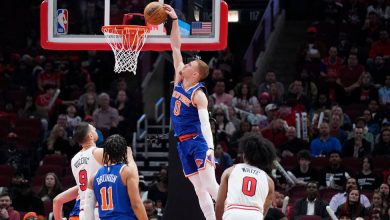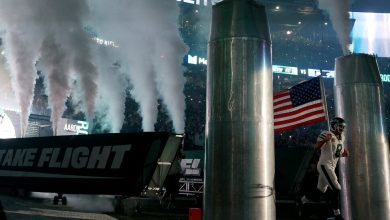Bob Brown, Intimidator on N.F.L. Offensive Lines, Dies at 81

Bob Brown, who was considered one of the N.F.L.’s most intimidating, aggressive offensive tackles in his era, but who had to wait more than 30 years after his retirement in 1973 to be elected to the Pro Football Hall of Fame, died on June 16 in Oakland, Calif. He was 81.
His son, Robert Jr., said his death, at a rehabilitation facility, was caused by complications of a stroke Brown had in April.
At 6-foot-4 and 280 pounds, Brown was both powerful and agile. In a 10-year career with the Philadelphia Eagles, Los Angeles Rams and Oakland Raiders, he was as adept at protecting his quarterback as he was at leading the blocking for his running backs.
He viewed line play as a four-quarter battle during which he would do virtually anything to win, including deploying his forearms as weapons or plunging one of his thick thumbs into the “real meaty, nice parts” of an opponent’s body, where the shoulder pads ended, he once told NFL Films.
“He didn’t just block people,” an NFL Films narrator said dramatically. “He buried them.”
During practice with the Rams one day, Brown grew tired of being slapped on the sides of his helmet by the defensive end Deacon Jones — a tactic Jones used to disorient opposing linemen and move them out of his way. So Brown removed a screw from the face mask of his helmet and replaced it with a longer one that he filed to a sharp point. At the next practice, Jones impaled his left hand on the screw and needed a tetanus shot.
“I had two options,” Brown told The Associated Press in 2004, looking back on his career. “I could either go out there and be real good and be the beater, or I could go out there and be very mediocre or ordinary and be the beatee. I liked the role of beater better.”
His approach worked. Brown intimidated future Hall of Famers like Mean Joe Greene of the Pittsburgh Steelers and Herb Adderley of the Green Bay Packers. He was named a first-team All-Pro five times and selected for six Pro Bowls. The Pro Football Hall of Fame put him on its All-Decade team of the 1960s.
Robert Stanford Brown was born on Dec. 8, 1941, in Cleveland. His father, Ulysses, owned a grocery store; his mother, Beatrice (Lumpkin) Brown, was a homemaker and helped at the store.
Robert began playing football in junior high school. As a senior at East Technical High School, he was recruited by the University of Nebraska, where he played offensive guard and linebacker.
In 1963, his senior year with the Cornhuskers, Brown was a consensus all-American as an offensive guard. He was the first Black all-American in Nebraska’s football history.
Brown was chosen in the first round of the 1964 N.F.L. draft by the Eagles. He was tutored by the team’s defensive line coach, Dick Stanfel, and quickly established himself as one of the top offensive linemen in the league. But after five years, he asked for a trade, unhappy with the Eagles’ hiring of a new general manager, Pete Retzlaff.
He was sent to the Rams before the 1969 season, during which the team had an 11-3 record. But they lost, 23-20, to the Minnesota Vikings in the Western Conference championship game. The Vikings scored a safety in the fourth quarter when Carl Eller, Minnesota’s future Hall of Fame defensive end, fought off Brown in the end zone to sack the Rams’ quarterback, Roman Gabriel.
In 1971, Brown was traded again, this time to the Raiders, where he joined an offensive line that included four other future Hall of Famers: Art Shell, Gene Upshaw, Jim Otto and Ron Mix. John Madden, the Raiders’ coach from 1969 to 1978, recalled the first impression Brown made on his new teammates in training camp.
“He hits a goal post with his forearm. Crack! And the whole goal post goes right down. All the guys are looking like this,” Madden told NFL Films, his mouth agape and eyes wide to illustrate their reaction. Then, he added, “He turned around and walked off the field.”
Injuries limited Brown’s playing time in the 1973 season — he started just eight games and played two more — and his career ended after three years with the Raiders. Over the next half-century, he spent most of his time restoring classic and muscle cars.
In addition to his son, Brown’s survivors include his wife, Cecilia (Grier) Brown, and a granddaughter.
Despite the honors he piled up during his football career, Brown had to wait 31 years to make it into the Pro Football Hall of Fame.
“I was disappointed after the first five years out of ball. I thought I’d have been nominated and elected after that long. But it didn’t happen,” he told The Lincoln Journal Star of Nebraska in 2004. “After a decade or so,” he added, “I finally let it go.”
At his induction in Canton, Ohio, in 2004, he talked about his teammates, including Deacon Jones, and the battles in practice that helped lead to his belated enshrinement.
“I love you for it,” he said. “But Deac, did you have to be so rough?”



